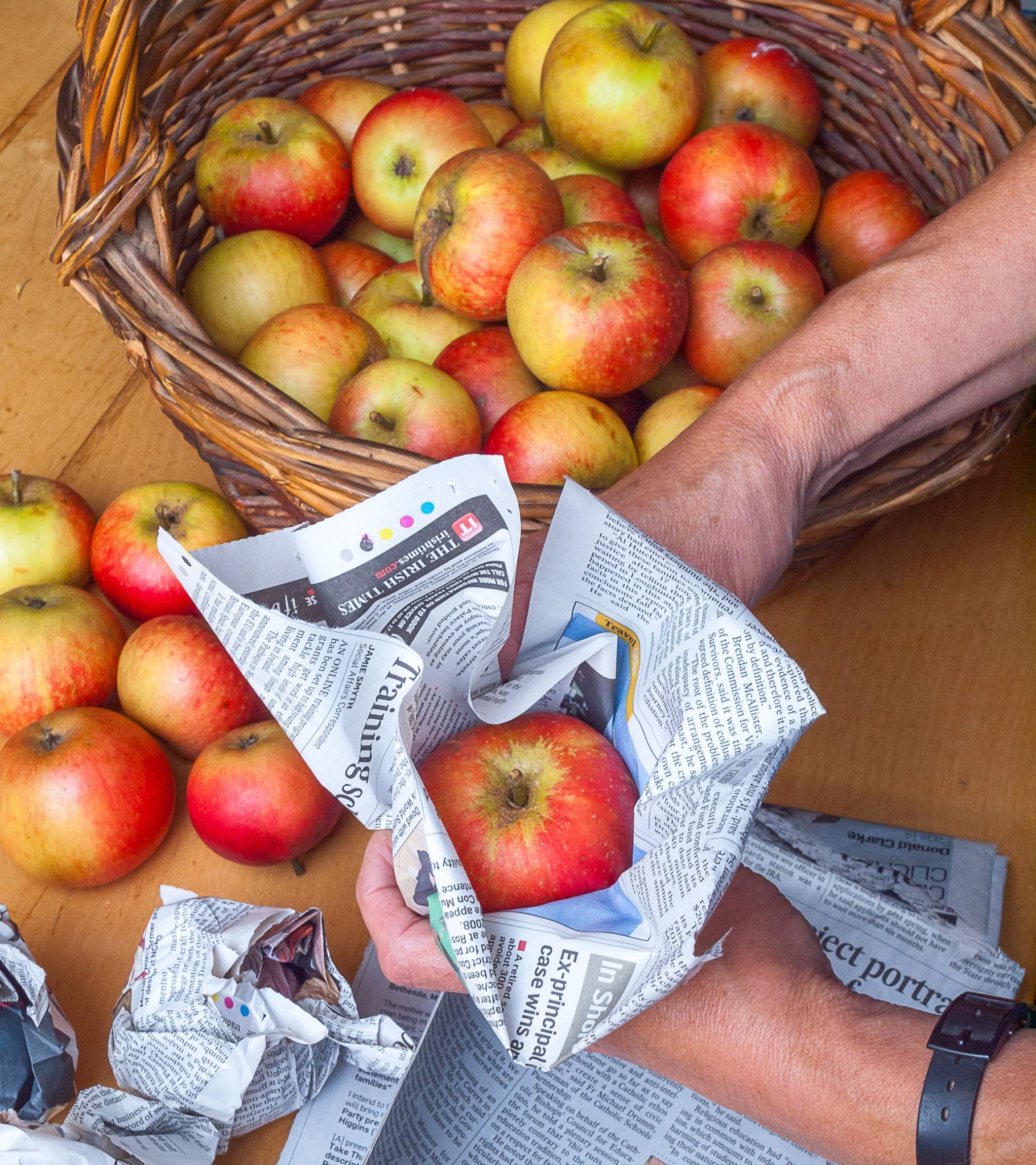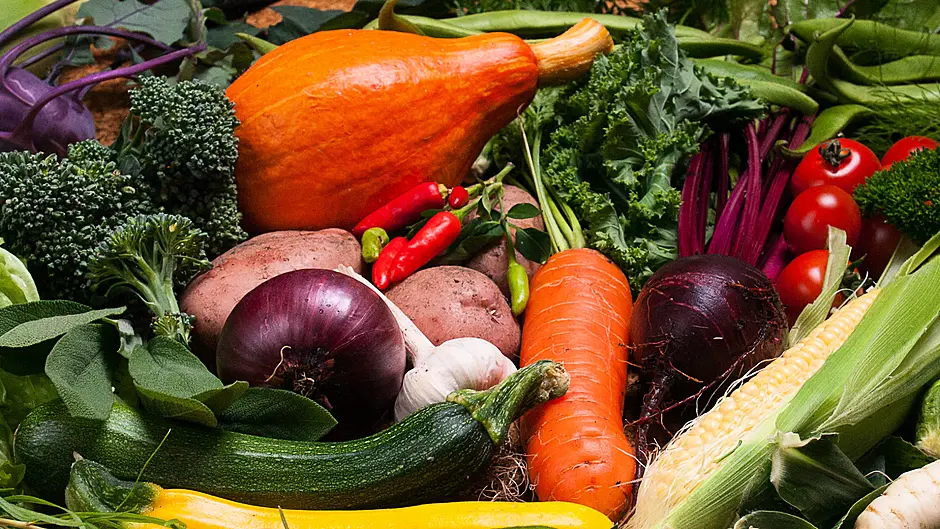BY JOYCE RUSSELL
It’s that time of year! The fruit and vegetable garden is bursting with the rewards for all your work and the main job now is to harvest, use, and store the bounty.
This article was featured in our Home & Garden Autumn/Winter 2024 supplement – you can read the full supplement here!
If you only have small amounts, then many things will store for a few days, or weeks, in a cool dry place until you use them.
If you have more to pick than you can possibly use in the short term, then you may want to put some things into longer-term storage.
This can be a case of making jars of jam, or freezing trays of berries; or it can be putting bags of root vegetables in a cool, dry shed.
Some general tips apply when it comes to choosing the time to harvest
• Pick when things are at their best – old, tough and stringy specimens should be avoided
• Pick when things are a good size for you – some people like large carrots, others like small ones.
• Pick or dig on a dry day if possible – it’s much easier to use and store clean dry fruits and vegetables than wet ones.
• Pick before seeds become too large and usually before flesh turns starchy.
• Pick before disease or frost harms the crop.
And ....
• Discard any damaged or diseased items – these will deteriorate in store and the problem may spread.
• Avoid over-ripe or under-ripe fruit and veg – these may not taste great and may impact the flavour of anything you use them in.
What’s best for which crop?
Apples and pears
Only store whole fruit that is picked from the tree – windfalls can be used in sauces, baked goods, chutneys etc. Sound fruit can be wrapped in newspaper and layered in boxes. Keeping times depend on the variety, but many will keep for months in a cool frost-free shed. Slightly under ripe fruit will often ripen in storage.

You can freeze peeled and sliced fruit. You can also dry slices in a dryer or very low oven. Dip them in a lemon, water and sugar solution to prevent browning.
Broad beans and climbing beans
Blanche for one minute and chill in cold water before open freezing on trays. Pack into airtight bags or tubs once they are frozen. You can also make and freeze many bean-based recipes.
Beetroot, carrot, parsnip
All of these last well if spread between layers of lightly dampened sawdust, sand or potting compost in a cool dry frost-free shed. Some people leave roots in the ground and dig as needed. Most will suffer some pest or frost damage so it is better to lift and store them.

Potatoes
Be careful to look at each potato and only put sound ones into your store. They keep well in a large box covered with a blanket to keep light out – a flat box allows you to sort through them as needed. Potatoes store for months in a cool, dark, frost-free place – they turn green if exposed to light.
Peas
Young fresh peas can be frozen as for broad beans, slightly older ones can be dried in the sun or over a radiator. Pack into jars when fully desiccated.
Garlic and onions

Spread bulbs out to dry until the stems are brown and dry. Make strings or plaits to hang up in the house – these look lovely and the bulbs store for months. Remove any that soften and use before they push out green shoots.
Courgettes and cucumbers
These don’t freeze or store well by themselves, but they do make excellent pickles or they can be added to cooked dishes in the freezer.
Herbs
Pick herbs before they flower, if possible, and before leaves start to discolour. Chop and freeze small amounts with water in ice cube trays, or spread to dry on a plate on a sunny window ledge. Large bunches can be hung up in a warm place near a stove or radiator. Crumble into jars once they are dry.
Peppers
Fleshy sweet varieties are good additions to chutney or can be added to many dishes for the freezer. You can freeze sweet peppers if sliced into smaller pieces before freezing. Chilli varieties keep well for a year if frozen whole in airtight bags or containers.

You can also spread chilli peppers to dry on a plate in the sun, or tie onto strings to dry near a heat source. Dried peppers keep for a year or more if stored in sealed jars.
Pumpkins and squash
Different varieties keep for different lengths of time, so check the seed packet. Summer squashes may only last a couple of months whereas winter ones usually last through to the following spring. Spread pumpkins out in a cool frost free place and they need little attention. Remove any that show signs of deterioration, certainly before they rot and collapse releasing lots of smelly liquid!
Raspberries, blackberries and currants
I like to open freeze and then bag soft fruits. It means that they don’t stick together and it’s easy to pour out a small amount from a bag as needed. Figs and rhubarb also freeze well if cut into smaller sections.
Tomatoes
A real treat is to semi-dry small tomatoes and pack them into jars of olive oil. Cut fruit in half and spread on a wire rack, then sprinkle with salt. Tomatoes need a lot of sun to dry well, so a dedicated dryer, or an oven on the lowest heat and with the door ajar, are the best options. Semi-dried is the aim so don’t let them get brown or leathery. Pack into jars along with some herbs such as rosemary and thyme and add in a few cloves of garlic.
You can also open-freeze tomatoes, either cut or whole, and pack into airtight bags once they are frozen. These can be used through the winter in soups stews etc. They taste very good, but don’t expect the texture of a fresh tomato.
Look after your stores
Whatever you choose to store and whichever method you use, don’t forget to check how your stores are doing. Jams can go mouldy if the seal isn’t tight and many things can rot in storage.

Frozen fruit and vegetables keep at their best for a few months, but you should aim to use your stores before the new season crops roll in next year. Remove anything as soon as you see a problem and try to keep the rest of your stores in good condition.
Most of all, enjoy the taste of your home-grown harvest. Each stored treat brings a taste of the summer garden into the kitchen.








